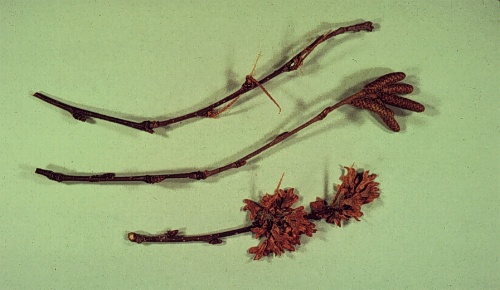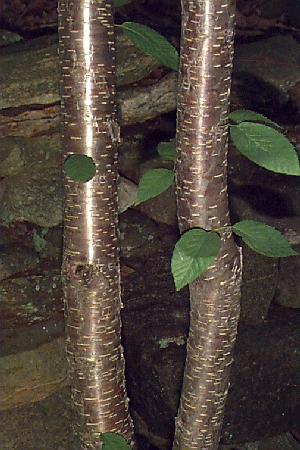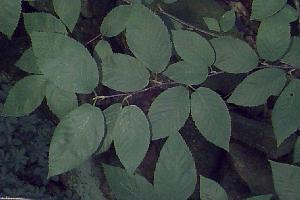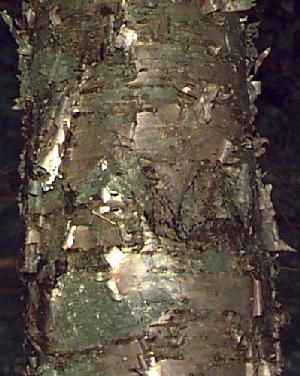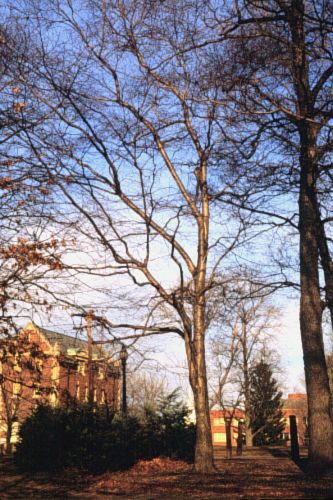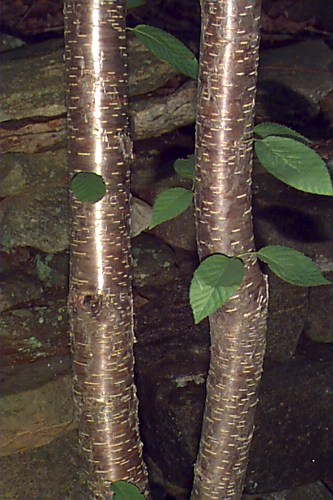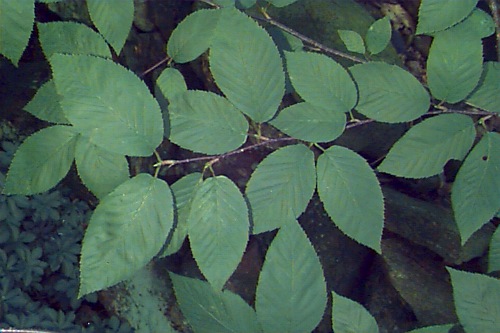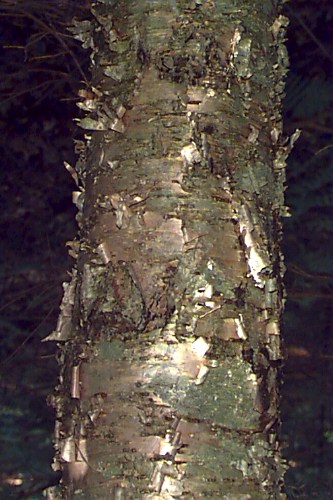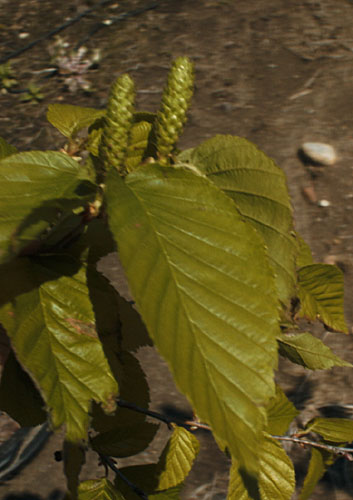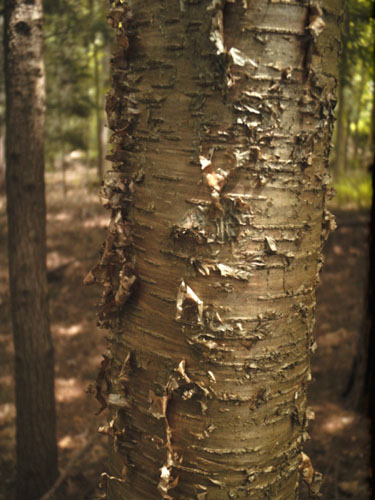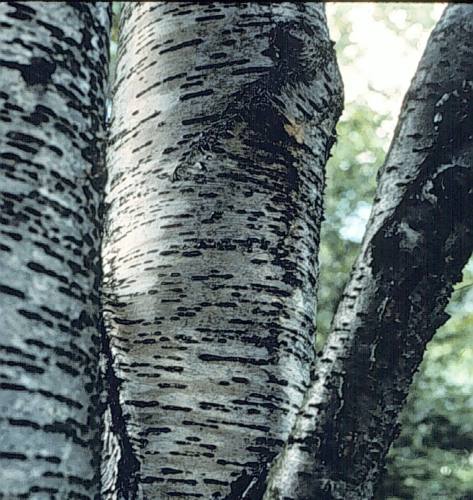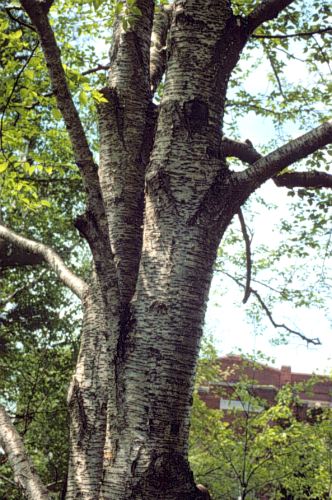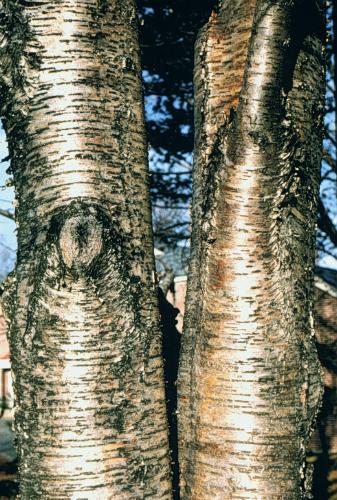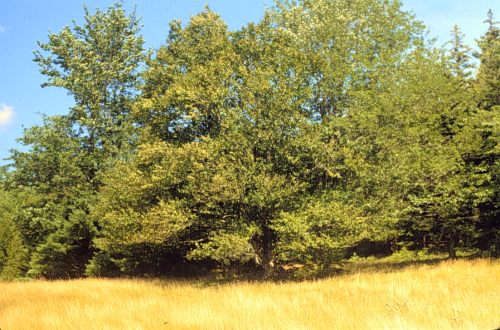Betula alleghaniensis
Yellow Birch
Betulaceae
ExpandHabitat
- native to northeastern North America
- zone 3
- common in cool regions; often on north facing slopes
Habit and Form
- similar in size and form to B. lenta
- commonly 60' to 75' tall; can reach 100' in the wild
- pyramidal and dense when young, developing a rounded to irregular crown when mature
- deciduous medium to large tree
- medium texture
Summer Foliage
- alternate, simple leaves
- 3" to 5"; long and half as wide
- elongated oval in shape, doubly serrate
- dull, dark green upper surface, light green underside
- broken twigs have a wintergreen smell
Autumn Foliage
- turns a showy yellow
Flowers
- blooms in mid to late April
- monoecious: male and female catkins
- generally 5 to 8 male catkins per cluster
Fruit
- small nutlets held in catkins
Bark
- amber to silvery
- smooth and exfoliating in thin shreds or rolls
- interesting and showy
Culture
- prefers cooler environments
- not as well adapted to heat and drought as B. lenta
- best in full sun
- cool moist soils are preferred
- move B & B or in containers
Landscape Use
- lawn tree, shade is relatively light
- shade tree
- for showy bark
- naturalized areas; edge of woods
- perhaps useful because it is not especially susceptible to leaf minor or bronze birch borer
Liabilities
- doesn't like heat or drought
- perhaps short-lived
- stem cankers
- hard to locate in nursery trade
ID Features
- amber or silvery bark peeling in shreds or rolls
- elongated oval-shaped leaves
Propagation
- by seed
Cultivars/Varieties
- None
